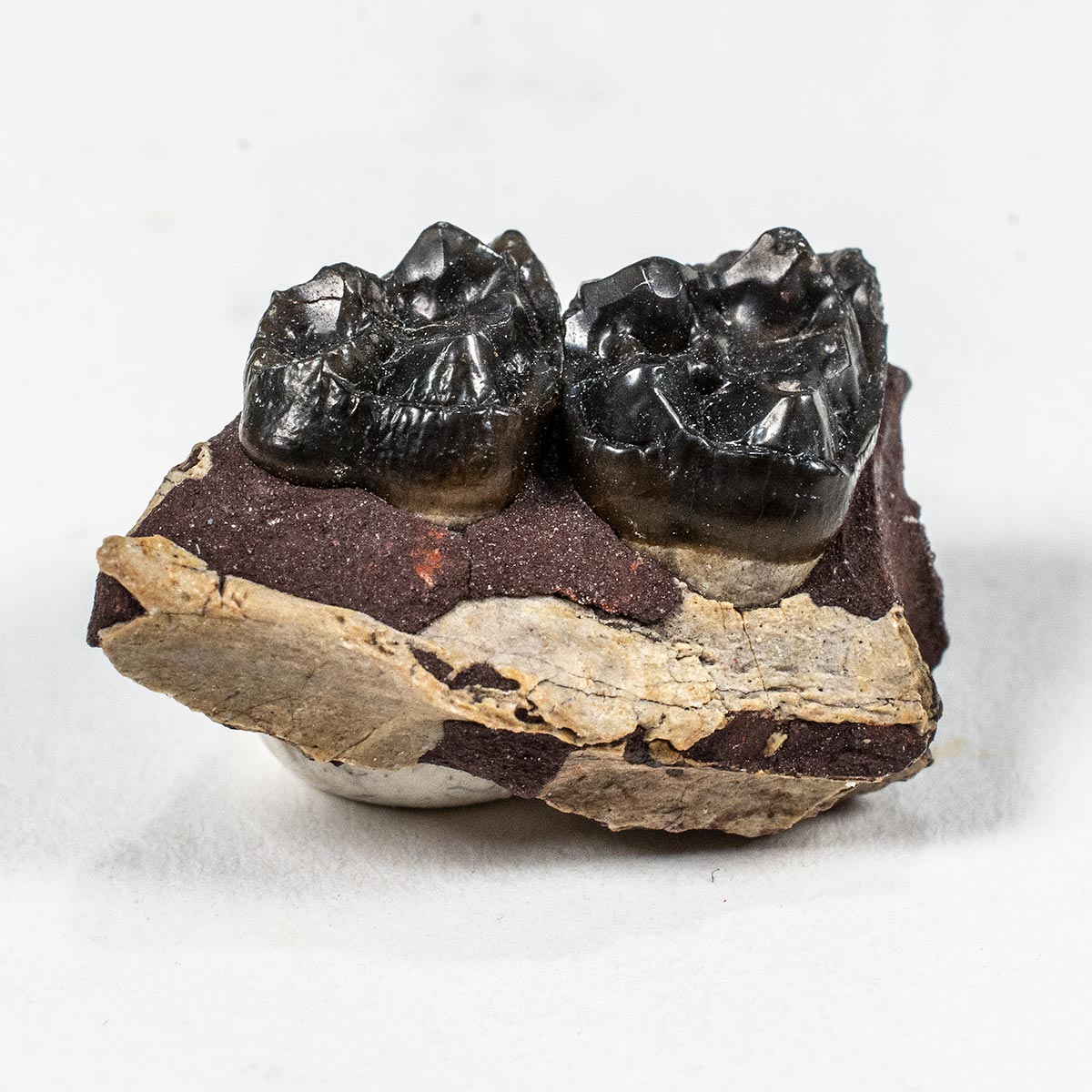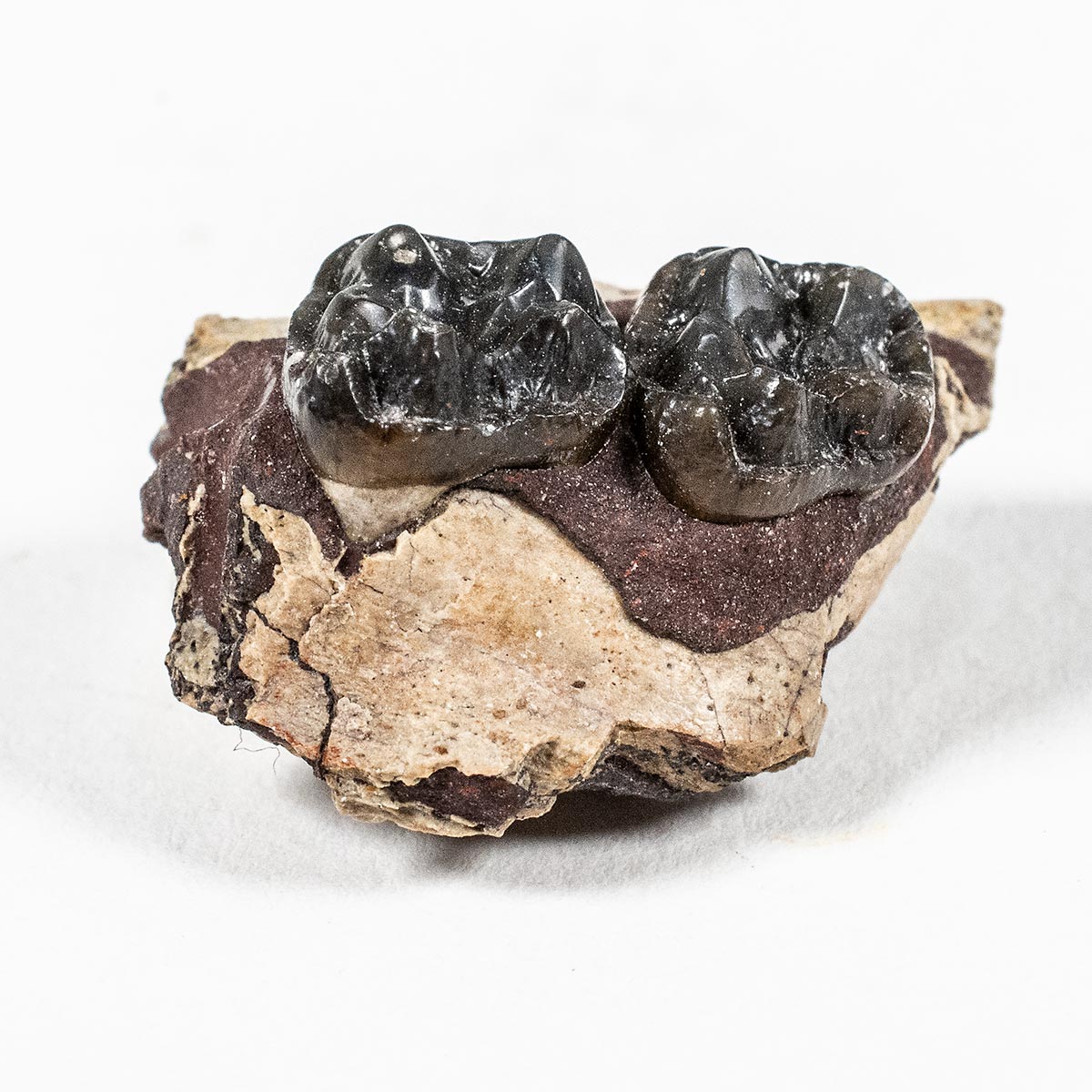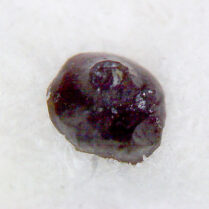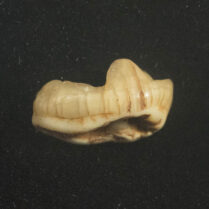Description
Hyracotherium sp.
Early Eocene
Willwood Formation
Powell, Wyoming, USA
19mm upper jaw section with 2 teeth
Hyracotherium, also known as Eohippus, is an extinct genus of small, herbivorous mammals that lived approximately 50 million years ago during the Eocene epoch. It is considered to be the earliest known ancestor of the modern-day horse.
Hyracotherium was a small animal, only about the size of a fox or a small dog. It had four toes on its front feet and three toes on its hind feet, which is different from the one-toed hooves of modern horses. It also had a short snout and a relatively large brain for its size.
Hyracotherium lived in forests and wooded areas, and it likely fed on soft vegetation and fruits. Its teeth were well-suited for grinding and chewing plant material.
Over time, the descendants of Hyracotherium evolved to become larger and adapted to living in open grasslands. Their teeth changed to allow them to graze on tougher, drier grasses, and their legs became longer and more slender, allowing them to run faster and more efficiently. Eventually, they evolved into the modern-day horse.
Teeth of Eocene horses are not common on the market and Hyracotherium/Eohippus is the best-known of the early mammals so it’s a must-have in any mammal collection.






